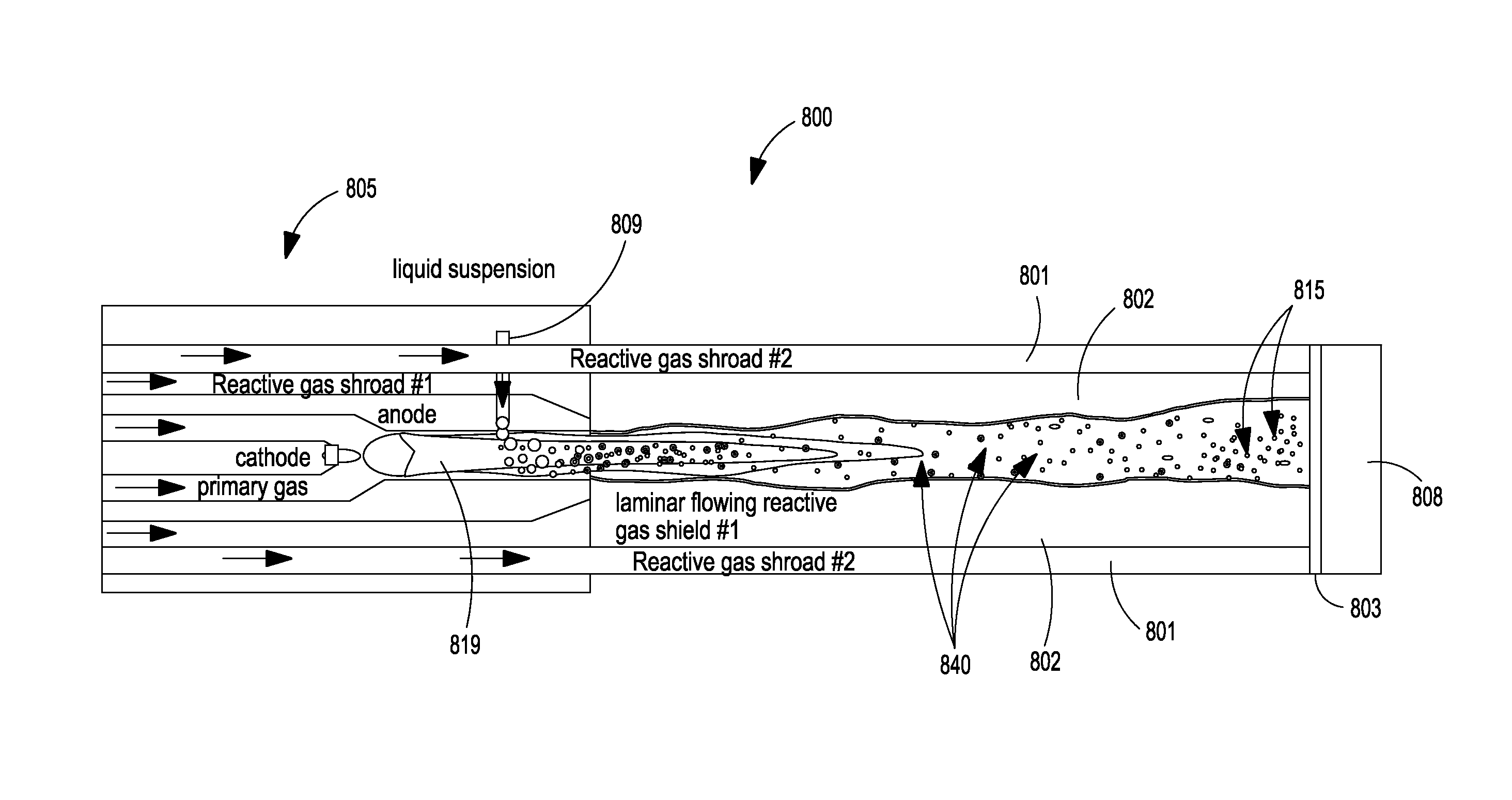Reactive gas shroud or flame sheath for suspension plasma spray processes
a plasma spray and reactive gas technology, applied in the field of suspension plasma sprays, can solve the problems of increasing the likelihood of clogging in the conventional powder feed system, limiting the use of particles in the technology, and increasing the difficulty of introducing powdered coating material directly into the plasma jet, so as to improve the fragmentation of suspension droplets
- Summary
- Abstract
- Description
- Claims
- Application Information
AI Technical Summary
Benefits of technology
Problems solved by technology
Method used
Image
Examples
Embodiment Construction
[0027]The present disclosure relates to a novel SPS system and process for the deposition of coating material. The SPS system and process of the present invention is particularly suitable for deposition of sub-micron particles. The disclosure is set out herein in various embodiments and with reference to various aspects and features of the invention.
[0028]The relationship and functioning of the various elements of this invention are better understood by the following detailed description. The detailed description contemplates the features, aspects and embodiments in various permutations and combinations, as being within the scope of the disclosure. The disclosure may therefore be specified as comprising, consisting or consisting essentially of, any of such combinations and permutations of these specific features, aspects, and embodiments, or a selected one or ones thereof.
[0029]The present invention recognizes the shortcomings of current SPS systems and processes. These shortcomings...
PUM
| Property | Measurement | Unit |
|---|---|---|
| particle size | aaaaa | aaaaa |
| axial distance | aaaaa | aaaaa |
| distance | aaaaa | aaaaa |
Abstract
Description
Claims
Application Information
 Login to View More
Login to View More - R&D
- Intellectual Property
- Life Sciences
- Materials
- Tech Scout
- Unparalleled Data Quality
- Higher Quality Content
- 60% Fewer Hallucinations
Browse by: Latest US Patents, China's latest patents, Technical Efficacy Thesaurus, Application Domain, Technology Topic, Popular Technical Reports.
© 2025 PatSnap. All rights reserved.Legal|Privacy policy|Modern Slavery Act Transparency Statement|Sitemap|About US| Contact US: help@patsnap.com



